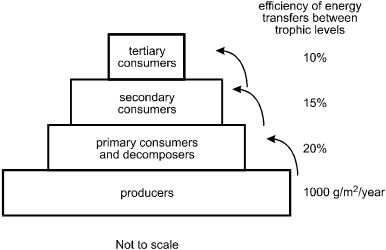I was thinking about things that I have read in permaculture one, Permaculture: Principles and Pathways Beyond Sustainability, bio-intensive books etc. and there is one thing that bothers me about it. Even with this realization, I still plan to pursue permaculture endeavors, but I have to ask....
Is on-site sustainability possible?
What I mean by "on-site" is once you have setup your system, is it possible from that point on to meet the needs of maintaining soil fertility from things only on that site indefinitely? In this scenario I am assume a very very large plot of land and you bringing in a lot of initial inputs (sheet mulch, manures, compost, top soil, rock dusts, organic amendments). Living very very low impact, very modest and growing just enough to meet your true needs.
I am beginning to think that it is
not actually possible, because any human impact, is eventually detrimental.
Here is my thought pattern, almost like a math proof if you will...
Inputs: Your soils, organic matter, bio mass, etc. on the property are a finite amount. However vast and mind bogglingly large, they at some point have a quantity.
We also know that energy coming into a system has a limited quantity. Also technically speaking, even though this is imperceivably slow, the sun's output is gradually declining and will some day be reduced to nothing.
Outputs: When plants grow, they require nutrients, this transfer from soil to plant is pretty efficient, but technically it is not 100% efficient. This means for each plant we grow, we lose a small portion of nutrients.
We know from Biomass Efficiency transfer principles of tropic levels, that each level is only 10% effcient meaning we lose 90% of inputs each level. For example (theoretical for demo only)
Plant (100 calories) -> Bird (10 Calories) -> Human (1 calorie)
We also know that the law of thermo dynamics that once we convert something to heat (digestion of food) we can never regain the initial energy.
So in an ideal system we have a native edible plant that we grow. We eat some part of it, say 10%. So the 90% left we compost, which creates heat, meaning that only a portion of the nutrients from the original plant is around. We apply the compost and the next plant only can use a portion of it because of inefficiencies. Now that 10% we ate, we compost the human waste (humanure techniques), but our digestion process and composting process only returns a portion of the nutrients to the soil.
In the end, the plant that took the nutrients from the soil, only returned 60, 70, 80, 90, or even 99% of the original nutrients, but the point is, that it is physically impossible to return 100%.
Mitigation of loss: We do a lot in permaculture to return nutrients in the soil. Composting, using residues, Humanure, resting fields, natural approaches to farming, reducing or eliminating our consumption of meats.
We use nitrogen fixers like legumes to capture nutrients from the air and store in the form of soluble nitrogen.
We work to capture and store energy in unique ways at a level that might be higher than normal.
Ultimately a negative impact is created: However small, however slow, it seems to me that our outputs out weigh the inputs. This is because the inputs are finite and the outputs are growing cumulatively. Permaculture is certainly better than how we doing things now in our world (for the majority of it), but I think there needs to be some recognition to the fact that no matter how we live, us living has a negative impact. Humanity isn't sustainable.
That said with very small populations in the world (a few million world wide) that migrates every decade or so, it might be able to slow this process down so much it is almost a non issue.







